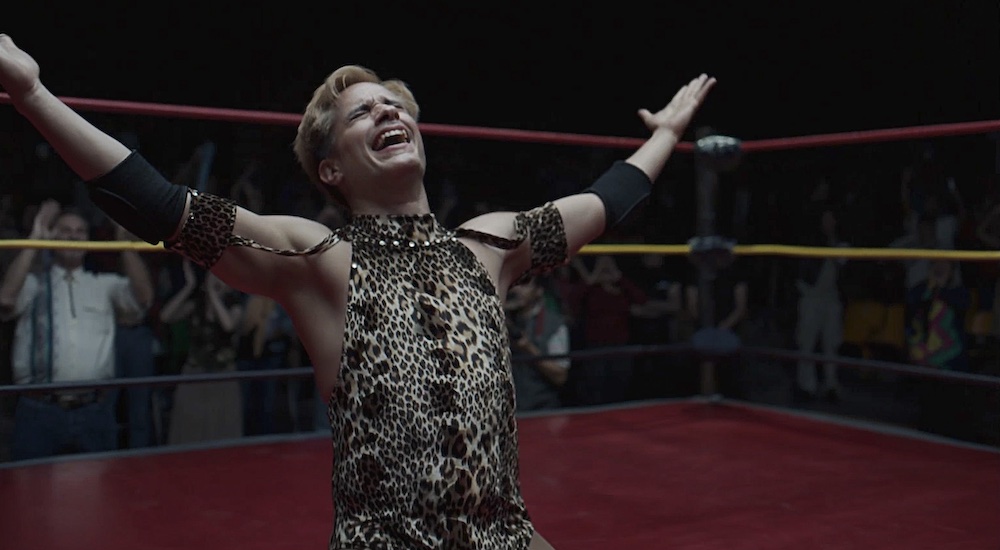Very few professional athletes are out publicly. So it’s no surprise that effeminate men participating in Lucha Libre (staged wrestling matches with predetermined outcomes) in the 90s were often pushed to be an “exótico”, a fighter that wore loud, tight clothing, lots of makeup, and was usually ridiculed as they lost to a heroic masked man. In Roger Ross Williams’ Cassandro, we learn about the man that changed this perception, becoming an incredibly popular exótico by being authentically himself.
Cassandro, aka Saúl Armendáriz, was raised in El Paso by his mother, abandoned by his often-absent father as a teenager when he came out. Still, he grew up watching Lucha Libre with his father and became determined to succeed as one himself. Mostly participating in small shows, he rose to fame when he invented a new persona, Cassandro, a loud and confident fighter unafraid to make lewd jokes and get the crowd on his side.
Cassandro is played brilliantly by Gael Garcia Bernal. It’s an impressive performance that Bernal disappears into, not only in his commitment to the physicality of fights but in Cassandro’s emotional journey of accepting himself and demanding the same from his peers. It can be difficult to portray a real person, but his past exceptional performances in The Motorcycle Diaries and, to a lesser extent, Mozart in the Jungle, were evidence enough that he’s a pro at it. The rest of the cast, particularly Perla de la Rosa as his mother, also does notable work portraying the people of a border town like El Paso/Juarez and its complexities. Bad Bunny also makes an appearance, passable enough as a henchman for Cassandro’s manager.
Roger Ross Williams first discovered Cassandro through a short documentary film and was inspired to turn his story into his first full feature. Perhaps it’s his documentary background that lends Cassandro such specificity of place. Far too often Mexico and the border are portrayed in that familiar yellow tone and every character is somehow involved in drugs and violence. Thankfully there are no yellow filters here and drugs and violence are treated like peripheral normalities. Sure, Cassandro has a coke habit, but he doesn’t somehow end up indebted to a drug lord. Williams also captures the ease of code-switching for Cassandro and his fellow El Pasoans. To border cities, said borders are fluid. Especially in those days, hopping back and forth for work or entertainment was incredibly common. In Texas, he’s seen as Mexican. But in Mexico City, he’s seen as a gringo, or American. As the great Edward James Olmos said in 1997’s Selena, “we have to be more Mexican than the Mexicans and more American than the Americans!”
Even in a feature-length film, Cassandro’s story feels a bit rushed due to a lack of context. Sure, there’s a fun training montage, but so much time is spent on Cassandro’s personal life that it’s hard to grasp his Lucha Libre success besides the increasingly bigger stadiums. It’s not until a few scenes at the end emphasize his impact on young queer men that you feel the emotional weight of his visibility. And very little context is given to understanding the environment in Mexico for queer people in the 80s and 90s. His mom makes a passing comment for him to be careful, to “not end up like Silvia’s son.” And audiences shout slurs at him during his fights, but it’s not made crystal clear how he was standing up against staunch religious beliefs and a culture that sees gay men as jokes. Even today, Mexican soccer fans are fined because they still use a slang word as a common soccer chant.
Cassandro is an inspiring story about being authentic to yourself in the face of adversity and Gael Garcia Bernal turns in a powerhouse performance. Its depictions of border cities and their culture are excellent and the film is a welcome addition to the inspiring biopic genre.

